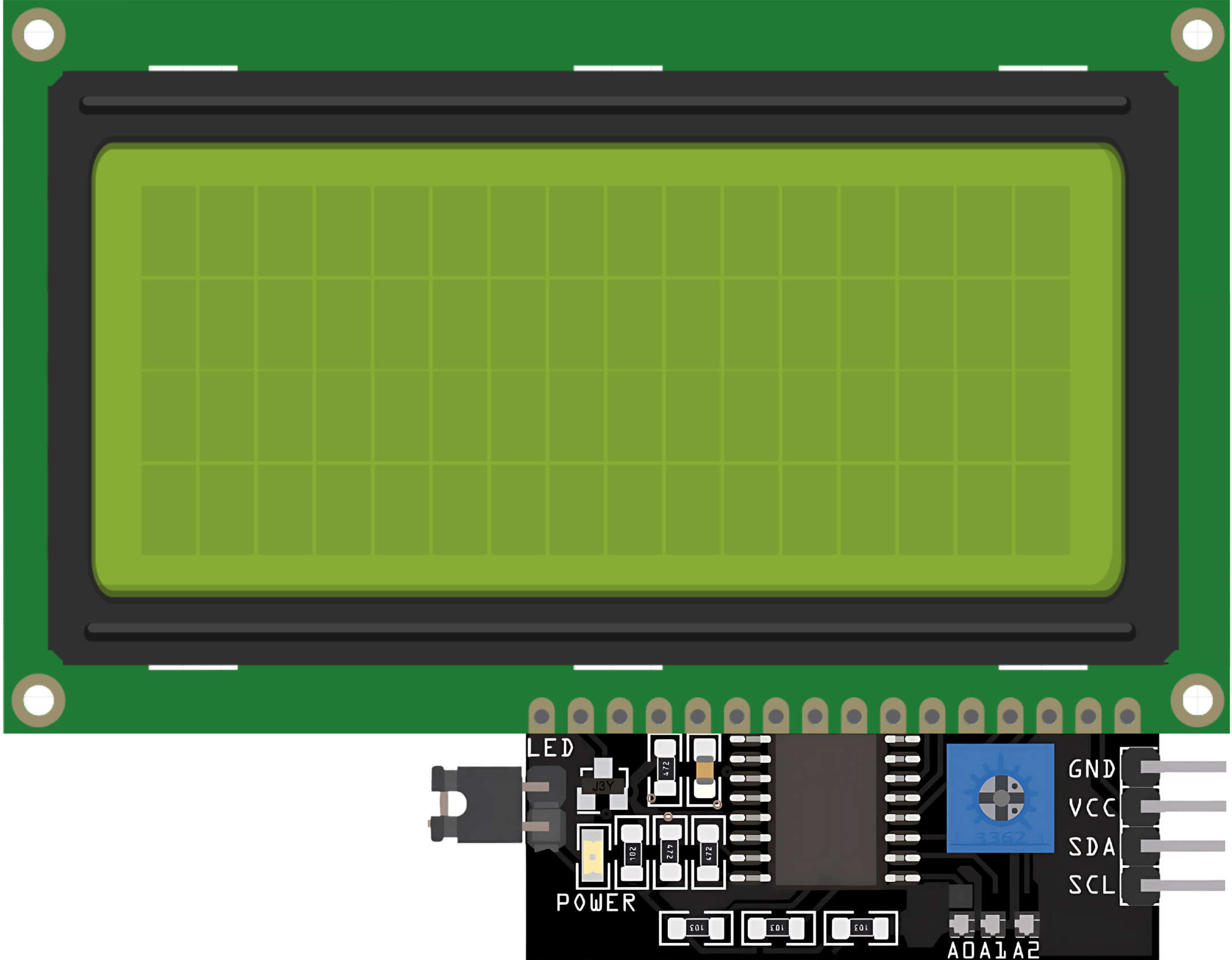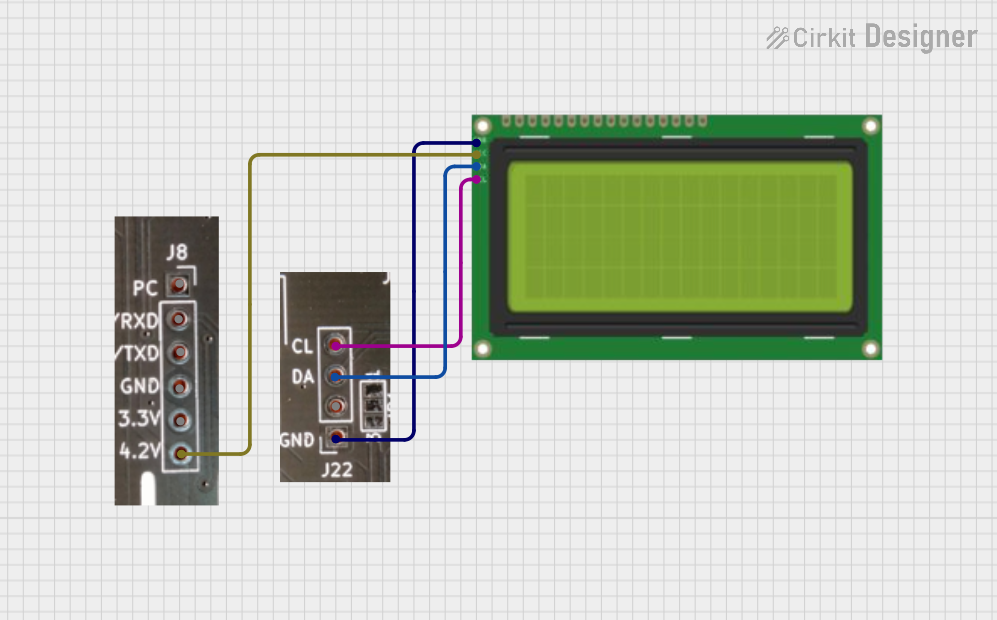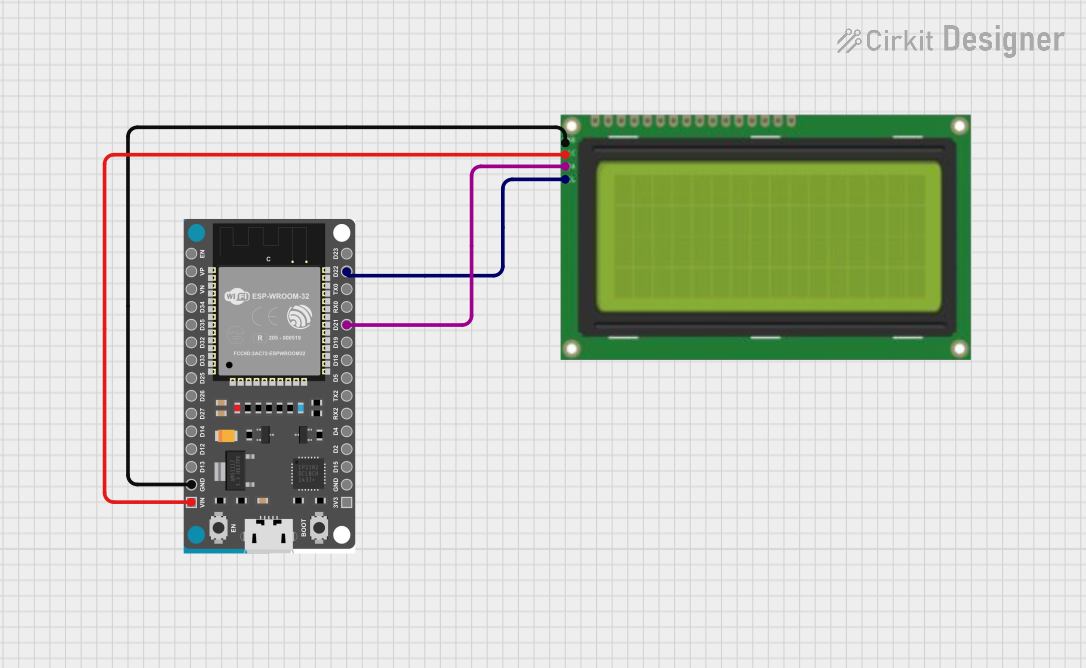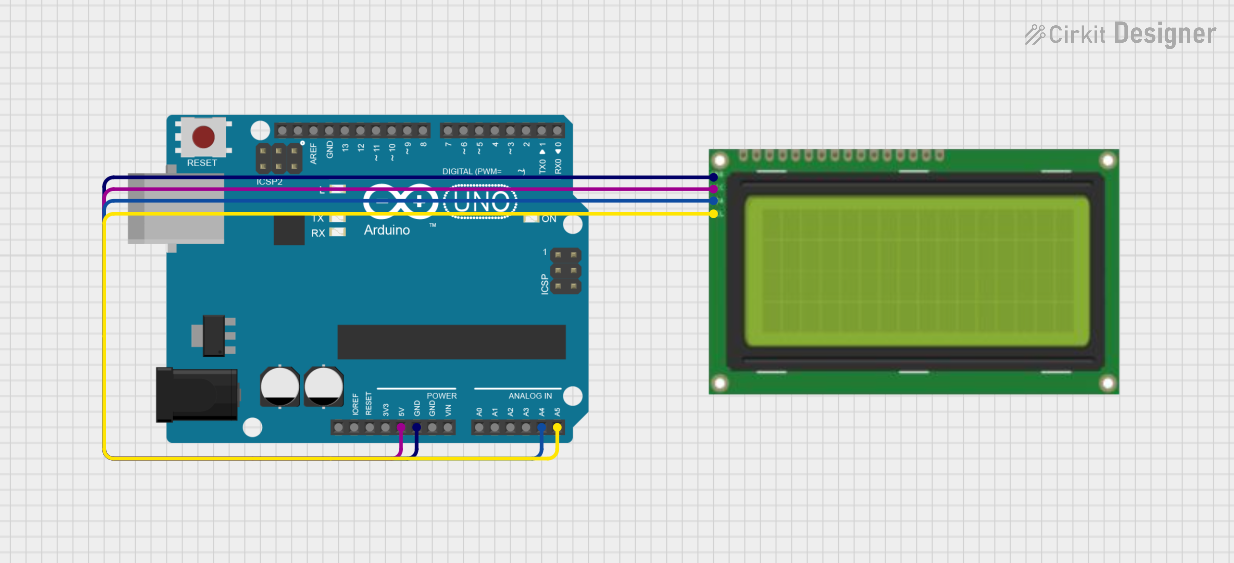
How to Use 20x4 LCD with I2C: Examples, Pinouts, and Specs

 Design with 20x4 LCD with I2C in Cirkit Designer
Design with 20x4 LCD with I2C in Cirkit DesignerIntroduction
The 20x4 LCD (Liquid Crystal Display) with I2C interface is a versatile display module capable of showing 20 characters per line across 4 lines. It is widely used in embedded systems and microcontroller projects due to its ability to display alphanumeric characters and custom symbols. The I2C interface simplifies communication by requiring only two wires (SDA and SCL), significantly reducing the number of pins needed compared to parallel LCDs.
Explore Projects Built with 20x4 LCD with I2C

 Open Project in Cirkit Designer
Open Project in Cirkit Designer
 Open Project in Cirkit Designer
Open Project in Cirkit Designer
 Open Project in Cirkit Designer
Open Project in Cirkit Designer
 Open Project in Cirkit Designer
Open Project in Cirkit DesignerExplore Projects Built with 20x4 LCD with I2C

 Open Project in Cirkit Designer
Open Project in Cirkit Designer
 Open Project in Cirkit Designer
Open Project in Cirkit Designer
 Open Project in Cirkit Designer
Open Project in Cirkit Designer
 Open Project in Cirkit Designer
Open Project in Cirkit DesignerCommon Applications and Use Cases
- Displaying sensor data in IoT projects
- User interfaces for embedded systems
- Menu systems for devices
- Real-time clocks and timers
- Educational and prototyping projects
Technical Specifications
Key Technical Details
- Display Type: 20x4 character LCD
- Interface: I2C (Inter-Integrated Circuit)
- Operating Voltage: 5V DC
- Backlight: LED (usually white or blue)
- Contrast Adjustment: Potentiometer on the I2C module
- I2C Address: Typically 0x27 or 0x3F (configurable)
- Current Consumption: ~20mA (with backlight on)
- Character Size: ~5.0 x 8.0 mm
- Operating Temperature: -20°C to 70°C
Pin Configuration and Descriptions
The I2C module attached to the 20x4 LCD reduces the number of pins required for operation. Below is the pin configuration:
| Pin | Name | Description |
|---|---|---|
| 1 | GND | Ground (0V) |
| 2 | VCC | Power supply (5V DC) |
| 3 | SDA | Serial Data Line for I2C communication |
| 4 | SCL | Serial Clock Line for I2C communication |
Usage Instructions
How to Use the Component in a Circuit
Wiring the LCD:
- Connect the GND pin to the ground of your microcontroller.
- Connect the VCC pin to the 5V power supply of your microcontroller.
- Connect the SDA pin to the I2C data line (e.g., A4 on Arduino UNO).
- Connect the SCL pin to the I2C clock line (e.g., A5 on Arduino UNO).
Install Required Libraries:
- Use the
LiquidCrystal_I2Clibrary for Arduino. Install it via the Arduino IDE Library Manager:- Go to Sketch > Include Library > Manage Libraries.
- Search for
LiquidCrystal_I2Cand install the library by Frank de Brabander.
- Use the
Basic Arduino Code: Below is an example code to display text on the 20x4 LCD:
// Include the LiquidCrystal_I2C library #include <Wire.h> #include <LiquidCrystal_I2C.h> // Initialize the LCD with I2C address 0x27 and 20x4 dimensions LiquidCrystal_I2C lcd(0x27, 20, 4); void setup() { lcd.init(); // Initialize the LCD lcd.backlight(); // Turn on the backlight lcd.setCursor(0, 0); // Set cursor to column 0, row 0 lcd.print("Hello, World!"); // Print text on the first line lcd.setCursor(0, 1); // Set cursor to column 0, row 1 lcd.print("20x4 LCD Test"); // Print text on the second line } void loop() { // No actions in the loop for this example }
Important Considerations and Best Practices
- I2C Address: Ensure the correct I2C address (e.g., 0x27 or 0x3F) is used in the code. If unsure, use an I2C scanner sketch to detect the address.
- Power Supply: Use a stable 5V power source to avoid flickering or malfunction.
- Contrast Adjustment: Use the potentiometer on the I2C module to adjust the display contrast.
- Pull-Up Resistors: Some I2C modules include built-in pull-up resistors. If not, add external pull-up resistors (4.7kΩ to 10kΩ) on the SDA and SCL lines.
Troubleshooting and FAQs
Common Issues and Solutions
No Display or Backlight:
- Verify the wiring connections (GND, VCC, SDA, SCL).
- Ensure the power supply is 5V and stable.
- Check if the backlight jumper on the I2C module is in place.
Incorrect or No Text Displayed:
- Confirm the correct I2C address in the code. Use an I2C scanner sketch to detect the address.
- Ensure the
LiquidCrystal_I2Clibrary is installed and correctly included in the code.
Flickering or Unstable Display:
- Check for loose connections or unstable power supply.
- Ensure proper pull-up resistors are used on the SDA and SCL lines.
Contrast Issues:
- Adjust the potentiometer on the I2C module to improve visibility.
FAQs
Q1: How do I find the I2C address of my LCD?
A1: Use an I2C scanner sketch to detect the address. Upload the sketch to your microcontroller, and it will print the detected address in the Serial Monitor.
Q2: Can I use this LCD with a 3.3V microcontroller?
A2: Yes, but you may need a logic level shifter for the SDA and SCL lines to ensure proper communication.
Q3: Can I display custom characters on this LCD?
A3: Yes, the LiquidCrystal_I2C library supports custom characters. Refer to the library documentation for details on creating and displaying custom characters.
Q4: What is the maximum cable length for I2C communication?
A4: The maximum length depends on the pull-up resistor values and communication speed. For standard setups, keep the cable length under 1 meter to ensure reliable communication.
By following this documentation, you can effectively integrate and troubleshoot the 20x4 LCD with I2C in your projects.